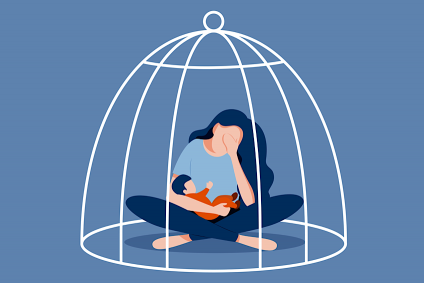
Despite ubiquitous recommendations to breastfeed and notwithstanding sincere intention to breastfeed, women often quit for two common reasons: not enough breastmilk and too much pain while breastfeeding.
For decades we’ve done nothing about either problem for the simple reason that lactation professionals have engaged in a massive campaign of denial.
The most cherished article of faith among breastfeeding professionals is that breastfeeding — unlike all other bodily processes — is perfect.
Therefore any difficulties are blamed on:
1. Mothers breastfeeding “wrong” as a result of the twin evils of formula advertising and cultural brain washing.
OR
2. “Broken” babies, victims of the twin evils of formula supplementation or tongue ties that must be surgically severed.
Recently, in large part due to the efforts of the Fed Is Best Foundation, breastfeeding professionals have finally acknowledged that insufficient breastmilk is common, not the result of poor commitment, affecting up to 15% of mothers, especially in the early days after birth.
Now comes evidence that pain is also common, and NOT the result of poor breastfeeding technique or infant tongues ties.
The paper Re-thinking lactation-related nipple pain and damage by physician Pamela Douglas lays the issues out clearly and concisely.
She notes — as I have done repeatedly in the past — that breastfeeding has paradoxically been over-medicalized.
…[O]vermedicalization and overtreatment is widespread in the care of breastfeeding women and their babies when inflammation, pain, and visible damage of the nipple–areolar complex emerge
What is the REAL reason women have breastfeeding pain?
Lactation-related nipple pain is most commonly a symptom of inflammation due to repetitive application of excessive mechanical stretching and deformational forces to nipple epidermis, dermis and stroma during milk removal. Keratinocytes lock together when mechanical forces exceed desmosome yield points, but if mechanical loads continue to increase, desmosomes may rupture, resulting in inflammation and epithelial fracture. Mechanical stretching and deformation forces may cause stromal micro-haemorrhage and inflammation. Although the environment of the skin of the nipple–areolar complex is uniquely conducive to wound healing, it is also uniquely exposed to environmental risks.
In other words, the nipple-areolar complex is damaged by the mechanical forces of the infant’s mouth and obvious wounds often result:
If epithelium can no longer adapt to the mechanical strain … epithelium ruptures … [T]he weakest part of the nipple–areolar complex epithelium, or the part placed under the most constant and severe elastic tension in the baby’s mouth, breaks apart. This results in visible trauma, including cracks, grazes, and ulcers, with associated pain and inflammation. Blisters result when horizontal shearing forces cause partial fracture and inflammatory serum collects in a pocket of fluid between layers of skin. Bruising results from vascular damage and haemorrhage.
Douglas addresses and discards the traditional reasons offered for breastfeeding pain.
It is NOT the result of an abnormal infant tongue:
The hypothesis that maternal nipple pain and damage results from abnormal tongue movement which pinches or rubs the nipple against the palate or upper alveolar ridge has resulted in widespread overtreatment of breastfeeding infants with frenotomy and bodywork exercises. This hypothesis is not supported by ultrasound or magnetic resonance imaging of the biomechanics of infant suckling, nor anatomic dissection of the infant floor of mouth fascia.
It is NOT the result of pacifiers or artificial nipples:
Similarly, clinicians and researchers have hypothesized that pacifiers and bottle teats alter neural pathways coordinating tongue movement and sucking patterns, resulting in nipple pain. But this theory is based on misconceptions about the role of tongue in milk transfer. A 2015 systematic review of 14 articles found little evidence of a causal relationship between pacifier and bottle teat use, and nipple confusion.
It is NOT the result of low maternal pain threshold:
…[U]ltrasound and vacuum studies of women experiencing nipple pain corroborate the mechanobiological model of lactation-related nipple pain.
Lactation professionals’ teaching about positioning may make things WORSE not better:
Commonly taught approaches to fit and hold when problems emerge rely upon outdated biomechanical models of infant suck. Much of what is offered women with breastfeeding difficulty, including interventions for fit and hold, is based upon experience or opinion…
The failure of current approaches to fit and hold to effectively resolve repetitive biomechanical micro-trauma during breastfeeding leads to widespread overmedicalization and overtreatment of both breastfeeding women and their babies, risking unintended outcomes.
The insistence on blaming women and babies for breastfeeding pain harms them both because lactation professionals’ diagnoses and recommendations:
– Invalidate her lived experience, which is that suckling or mechanical milk removal causes her pain and that if she were to cease this altogether, her pain would rapidly resolve;
– Disempower her, since she is not helped to resolve the pain herself … but is advised that she requires pharmaceutical intervention and multi-disciplinary teams;
– Re-traumatize her if she is a sexual abuse survivor by taking a sexual trauma history in a breastfeeding consultation, then proposing that persistent nipple pain is linked to sexual trauma and associated nociplastic effects;
– Place her at risk of side-effects of pharmaceutical interventions without evidence of benefit; and
– Result in financial burden of treatments without evidence of benefit.
The bottom line is that breastfeeding pain is real.
It is not the result of maternal mistakes or “broken” baby tongues.
Much of what lactation professionals believe about breastfeeding pain is wrong; therefore their approach often causes more harm than good.
The large number of women who quit breastfeeding because of persistent pain is testament to the lactation profession’s failure to understand it.

